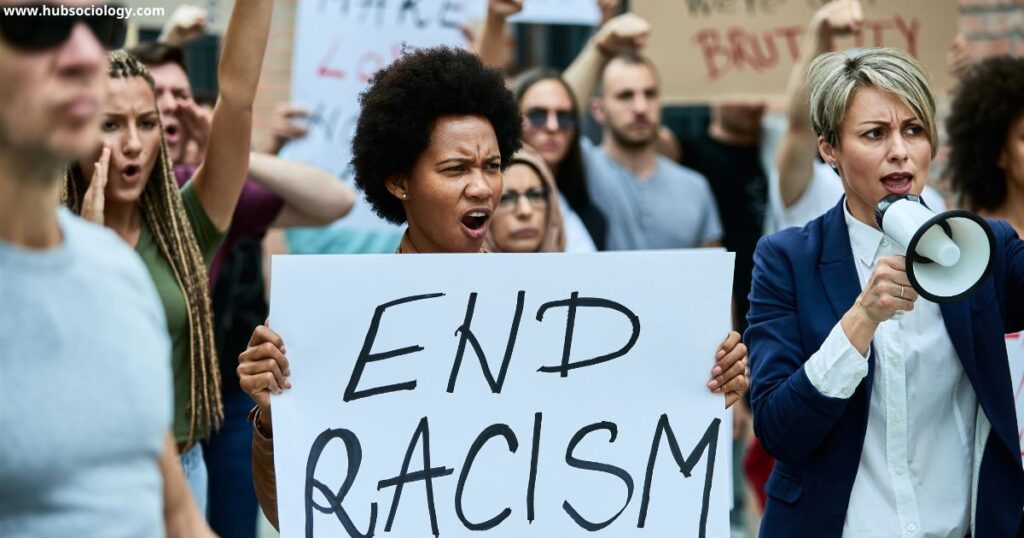Social change is an inevitable and continuous process that shapes societies over time. It refers to the transformation of cultural, economic, political, and social institutions and relationships. While social change can occur organically through natural processes, it can also be deliberately initiated and directed. This intentional effort to alter societal structures and norms is known as “Planned Social Change.” In sociology, planned social-change is a strategic and purposeful approach to addressing social issues, improving societal conditions, and achieving specific goals. This article explores the concept of planned social-change, its theoretical foundations, methods, challenges, and examples.
Defining Planned Social Change
Planned social-change refers to the deliberate and organized efforts to bring about specific changes in society. It involves identifying social problems, designing interventions, and implementing strategies to achieve desired outcomes. Unlike unplanned or spontaneous social change, which occurs without human intervention (e.g., technological advancements or natural disasters), planned social change is a conscious and systematic process.

Sociologists and social planners often engage in planned social-change to address issues such as poverty, inequality, education gaps, healthcare disparities, and environmental degradation. The goal is to create a more equitable, just, and sustainable society.
Theoretical Foundations of Planned Social Change
Several sociological theories provide the foundation for understanding and implementing planned social-change. These theories offer insights into how societies function, how change occurs, and how interventions can be designed effectively.
- Functionalism: From a functionalist perspective, society is a complex system of interrelated parts that work together to maintain stability. Planned social-change, in this view, aims to restore equilibrium when societal dysfunctions arise. For example, introducing educational reforms to address unemployment can help restore balance in the labor market.
- Conflict Theory: Conflict theorists argue that society is characterized by power struggles and inequalities. Planned social-change, from this perspective, seeks to challenge and dismantle oppressive structures. Movements for civil rights, gender equality, and workers’ rights are examples of planned social change rooted in conflict theory.
- Symbolic Interactionism: This theory focuses on the role of symbols, meanings, and interactions in shaping society. Planned social-change, in this context, involves altering perceptions and attitudes through communication and education. Campaigns to reduce stigma around mental health or promote environmental awareness are examples.
- Modernization Theory: This theory emphasizes the transition from traditional to modern societies. Planned social-change, in this framework, involves adopting new technologies, institutions, and values to achieve progress. Development programs in developing countries often draw on modernization theory.
- Social Movement Theory: Social movements are collective efforts to bring about social change. This theory examines how movements mobilize resources, frame issues, and create change. Planned social-change often involves the active participation of social movements.
Methods of Planned Social Change
Planned social-change employs various methods and strategies to achieve its goals. These methods can be broadly categorized into top-down and bottom-up approaches.

- Top-Down Approaches: These involve interventions initiated by governments, international organizations, or elite groups. Examples include:
- Legislation and Policy Changes: Enacting laws to promote equality, protect the environment, or improve public health.
- Development Programs: Implementing large-scale initiatives to address poverty, education, or infrastructure.
- Technological Innovations: Introducing new technologies to improve productivity, communication, or healthcare.
- Bottom-Up Approaches: These involve grassroots efforts initiated by communities, non-governmental organizations (NGOs), or individuals. Examples include:
- Community Organizing: Mobilizing local communities to address issues such as housing, sanitation, or education.
- Awareness Campaigns: Using media, art, and education to raise awareness about social issues.
- Social Movements: Organizing protests, strikes, or advocacy campaigns to demand change.
- Collaborative Approaches: These involve partnerships between governments, NGOs, communities, and other stakeholders. Collaborative approaches emphasize participation, inclusivity, and sustainability.
Challenges in Planned Social-Change
While planned social-change has the potential to create positive outcomes, it is not without challenges. Some of the key challenges include:
- Resistance to Change: Individuals and groups may resist change due to fear, tradition, or vested interests. Overcoming resistance requires effective communication, education, and negotiation.
- Unintended Consequences: Interventions may have unintended or negative consequences. For example, a development program aimed at reducing poverty may inadvertently harm the environment.
- Resource Constraints: Planned social change often requires significant financial, human, and technological resources. Limited resources can hinder the implementation and sustainability of interventions.
- Cultural Sensitivity: Interventions must be culturally appropriate and respectful of local traditions and values. Ignoring cultural context can lead to failure or backlash.
- Power Dynamics: Power imbalances can influence the planning and implementation of social change. Marginalized groups may be excluded from decision-making processes, leading to inequitable outcomes.

Examples of Planned Social-Change
- The Civil Rights Movement (USA): The Civil Rights Movement of the 1950s and 1960s was a planned effort to end racial segregation and discrimination. Through protests, legal challenges, and advocacy, the movement led to significant legislative changes, including the Civil Rights Act of 1964.
- Universal Primary Education (Global): Initiatives such as the United Nations’ Millennium Development Goals (MDGs) and Sustainable Development Goals (SDGs) have focused on achieving universal primary education. These efforts have increased school enrollment rates worldwide.
- Green Revolution (India): The Green Revolution of the 1960s and 1970s involved the introduction of high-yield crop varieties, irrigation technologies, and fertilizers to increase agricultural productivity. While it successfully addressed food shortages, it also had environmental and social consequences.
- Anti-Apartheid Movement (South Africa): The anti-apartheid movement was a planned effort to dismantle the system of racial segregation in South Africa. Through international pressure, protests, and negotiations, apartheid was abolished in the early 1990s.
- Public Health Campaigns (Global): Campaigns to combat diseases such as HIV/AIDS, malaria, and COVID-19 have involved coordinated efforts by governments, NGOs, and international organizations. These campaigns have saved millions of lives.
The Role of Sociologists in Planned Social Change
Sociologists play a crucial role in planned social-change. They contribute by:
- Conducting research to identify social problems and their root causes.
- Designing evidence-based interventions and policies.
- Evaluating the impact of social programs and initiatives.
- Advocating for marginalized and vulnerable groups.
- Educating the public and raising awareness about social issues.
Conclusion
Planned social-change is a vital tool for addressing the complex challenges facing societies today. By combining theoretical insights, practical methods, and collaborative efforts, it is possible to create meaningful and sustainable change. However, planned social change requires careful planning, cultural sensitivity, and a commitment to equity and justice. As societies continue to evolve, the need for intentional and strategic interventions will remain critical. Sociologists, policymakers, and activists must work together to ensure that planned social change leads to a better and more inclusive world for all.
Topic Related Questions
5 Marks Questions (Short Answers)
- Define planned social change and provide one example.
- What is the difference between planned and unplanned social change?
- Name two sociological theories that explain planned social-change.
- List three methods used in planned social-change.
- What is the role of legislation in planned social-change?
- Give an example of a top-down approach to planned social-change.
- What is the significance of grassroots movements in planned social change?
- How does resistance to change affect planned social change?
- What is the role of sociologists in planned social change?
- Provide one example of a successful planned social change initiative.
10 Marks Questions (Detailed Answers)
- Explain the concept of planned social change and discuss its importance in modern societies.
- Discuss the role of conflict theory in understanding planned social change. Provide an example.
- Compare and contrast top-down and bottom-up approaches to planned social change.
- What are the challenges faced in implementing planned social change? Discuss any three.
- Explain how modernization theory contributes to planned social change in developing countries.
- Discuss the role of social movements in planned social change, with an example.
- How does cultural sensitivity play a role in the success of planned social change?
- Explain the unintended consequences of planned social change with an example.
- Discuss the role of international organizations in planned social change. Provide an example.
- How can resource constraints hinder planned social change? Suggest ways to overcome them.
15 Marks Questions (Comprehensive Answers)
- Discuss the theoretical foundations of planned social change. How do functionalism and conflict theory contribute to its understanding?
- Analyze the methods of planned social change. Which approach (top-down or bottom-up) is more effective, and why?
- Critically evaluate the challenges of planned social change. How can these challenges be addressed to ensure successful outcomes?
- Discuss the role of sociologists in planned social change. How can their research and advocacy contribute to societal transformation?
- Explain the concept of planned social change with reference to the Civil Rights Movement in the USA. What lessons can be learned from this example?
- How does planned social change address global issues such as poverty, education, and healthcare? Provide examples to support your answer.
- Discuss the role of technology in planned social change. How has it influenced social transformation in the 21st century?
- Examine the impact of planned social change on marginalized communities. How can inclusivity be ensured in such initiatives?
- What is the significance of collaboration in planned social change? Discuss the role of governments, NGOs, and communities in achieving social transformation.
- Critically analyze the Green Revolution as an example of planned social change. What were its successes and failures?

1 thought on “Planned Social Change :Comprehensive note with 30 Questions”